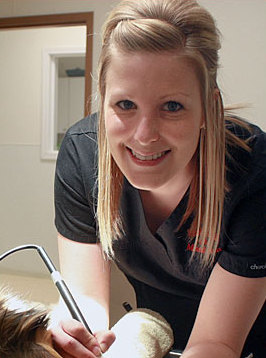Dental Care at the Veterinary Clinic of the Mineral Area
Dental hygiene is an important part of your pet's health and can often be the cause of serious illness. If left untreated, dental problems can lead to larger systemic issues in your pet due to oral bacteria entering the blood stream and damaging the kidneys, heart and liver.
However, dental disease is often overlooked by many pet owners. Unfortunately, it is estimated that more than 80 percent of dogs and 70 percent of cats develop tooth and gum disease by the age of three years.
Dental disease and its serious consequences can be avoided by bringing your pet to your veterinarian for regular dental check-ups and teeth cleanings. This is why the Veterinary Clinic of the Mineral Area offers full dental cleanings and other dental procedures.

Your Pet's Dental Cleaning

Veterinary dental cleanings are very different for pets than they are for you. Because anesthesia is required to keep your pet still and comfortable during a cleaning, your pet undergoes a complete physical examination prior to the cleaning in order to detect any complications that may occur from the use of anesthesia.
During a cleaning, the skilled veterinary technicians at the Veterinary Clinic of the Mineral Area use an ultrasonic scaler to remove tartar and plaque from your pet's teeth. Next, a periodontal probe is used to check under the gum line for signs of periodontal disease. Finally, your pet's teeth are polished to help delay future tartar build-up.
Home Dental Care
Dental care does not end with a visit to your veterinarian. You need to continue your veterinarian's good work at home by brushing your pet's teeth as part of a home dental care regimen. Any member of our staff can show you the proper method of brushing your pet's teeth as well as help you select the most effective dental products for your pet.
It is also important for you to recognize the signs and symptoms of dental problems, which include:
• Bad breath
• A yellowish-brown crust of plaque on the teeth near the gum line
• Red and swollen gums
• Pain or bleeding when your pet eats or when the mouth or gums are touched
• Decreased appetite or difficulty eating
• Loose or missing teeth

